Wearing something I have visibly mended fills me with joy. As I put on my clothes, walk past a mirror or generally go about my day, the colourful stitches flash proudly past my eyes, tiny glimmers of triumph and delight. The act of repairing is hugely satisfying and wearing my mends makes me happy.
Last week I wrote about a client’s family heirloom and this week I wanted to share the story of one of my own. My Nanna was a hairdresser and I’m told back in the 1960s she owned the largest salon in Essex. When I was a child her hair was, unsurprisingly, immaculate and she was always ‘beautifully turned out’. By the time I was an adult I was a good 6 inches taller than her but she still passed on some of her wardrobe to me, including a few flamboyant 70s frocks.
One of the more classic pieces in her wardrobe was a 1980s grey wool goat. It was a boxy, double-breasted affair (not at all my style or shape) and she’d shortened it at the sleeves to accommodate her diminutive stature. Yet I could see potential.
As a lover of mid-century style I had the coat reworked 15 years ago by the pioneering upcycling fashion brand Junky Styling. Annika Sanders skillfully transformed it into something that I like to imagine Vivienne Westwood might have designed in the 1940s. (I can dream!)
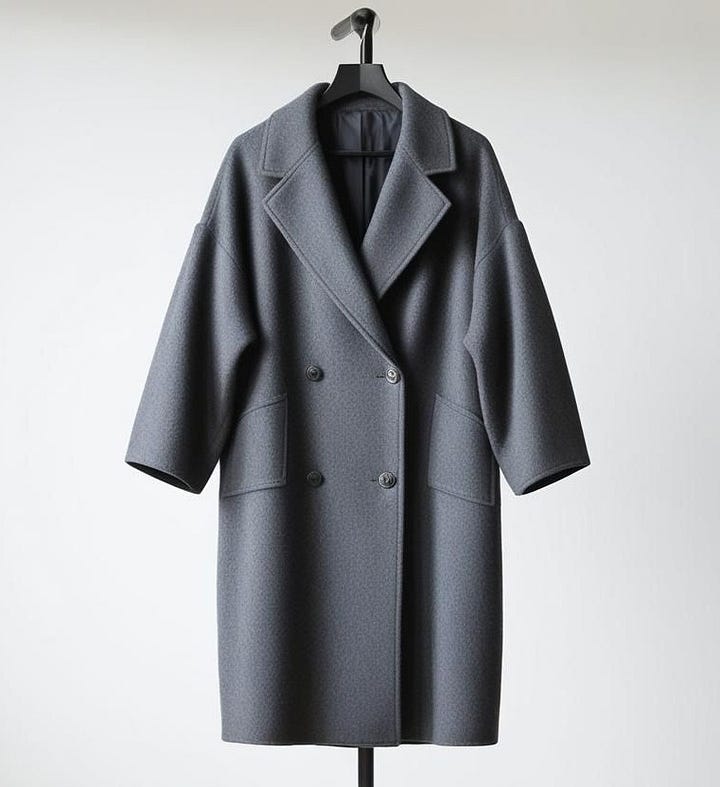
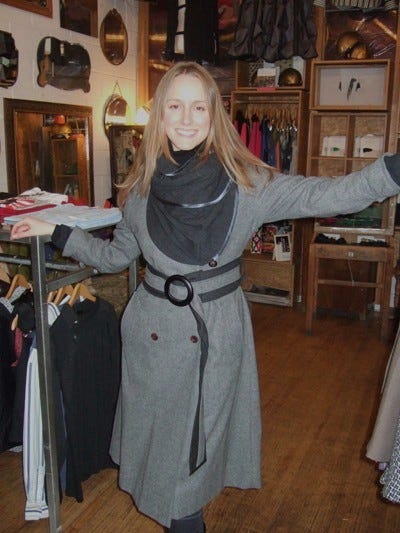
After a few years of wear and moth damage my one-of-a-kind coat needed some TLC. So far most of my darns had been on knitwear so I wanted to experiment with some visible darning on woven fabric.
There was some damage by the pocket where the fabric had become slightly torn from wear over the years. I made a darned patch first and then sewed the point of the pocket back in place so the repair peeks out.
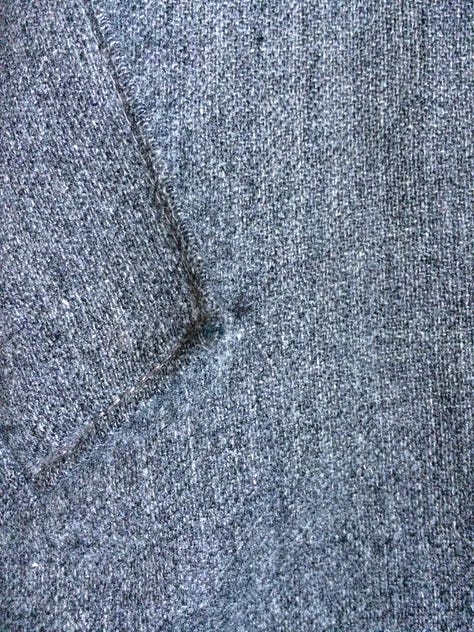
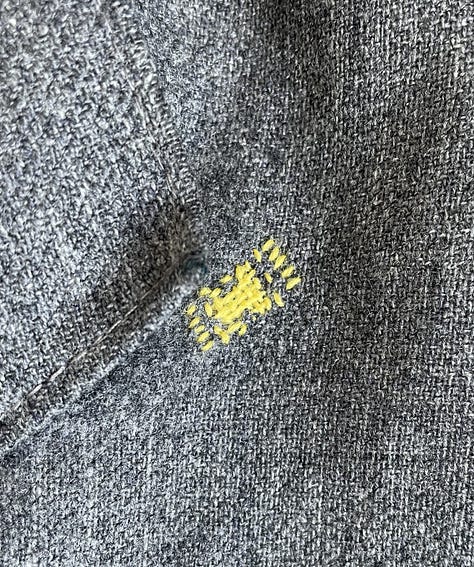
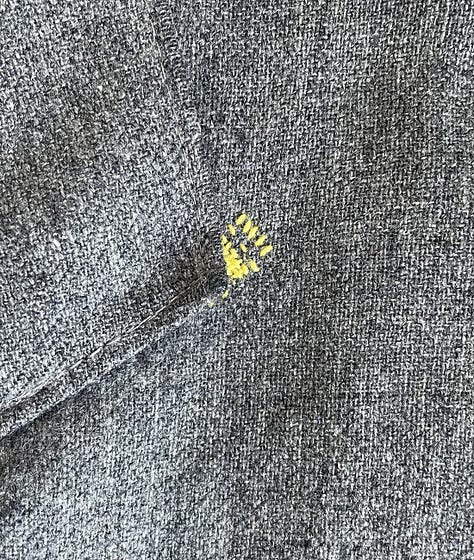
On the left sleeve the button had been pulled off which tore the fabric. I decided to darn a circular patch to compliment the more curved silhouette of the coat. As you can see from the photos below, I drew a circle with tailor’s chalk then tacked two circles to guide me. After doing a rough darn of the hole in grey to secure it (inside the small tacked circle), I stitched the vertical warp threads using different coloured darning yarn. Then with the help of a wooden darning mushroom I wove in the weft threads horizontally. Ordinarily I would have used an embroidery hoop for a darn on a woven material but I don’t have a hoop small enough to fit inside a sleeve. A mushroom worked fine for this.

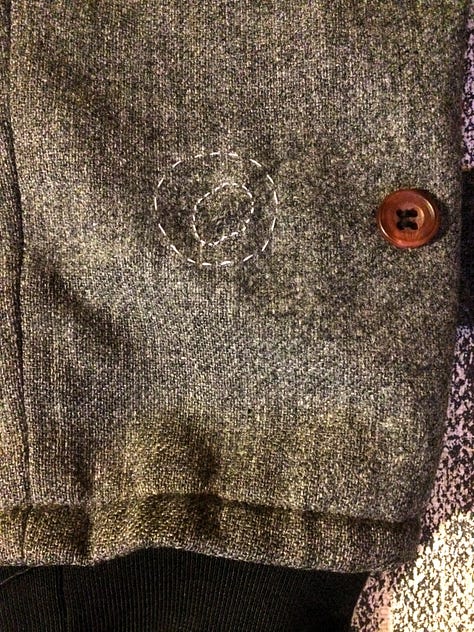
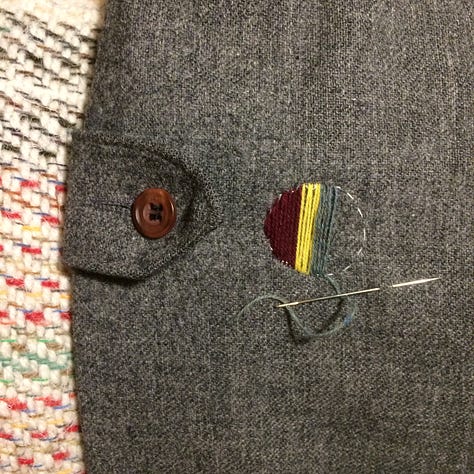
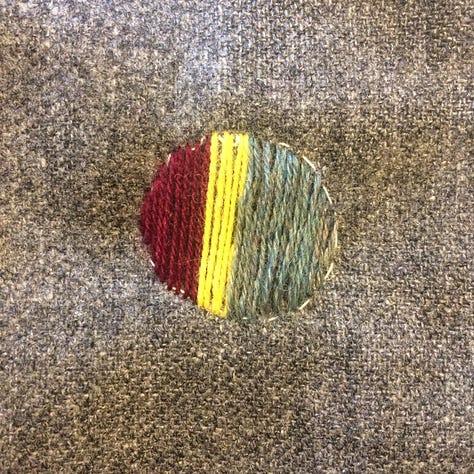
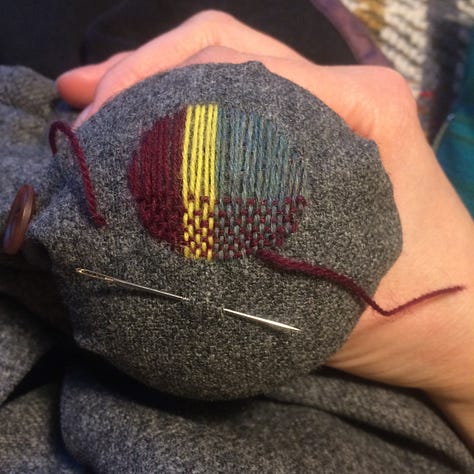
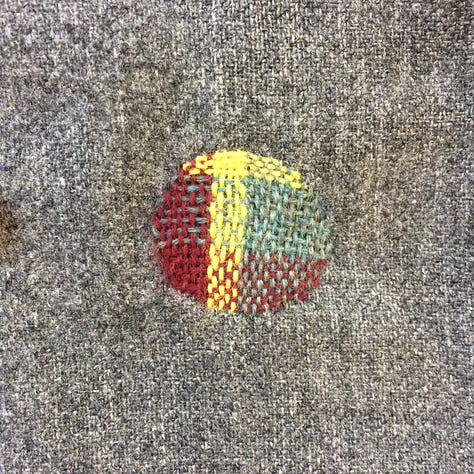
For the wear on the cuff of the left sleeve, I created a long darned patch using some darning yarn I already had in my mending kit. First I created the warp in black, grey and yellow, then used the same colour palette to weave the weft. I played with using different colours for both of the darns on the sleeve to make them even more of a feature.
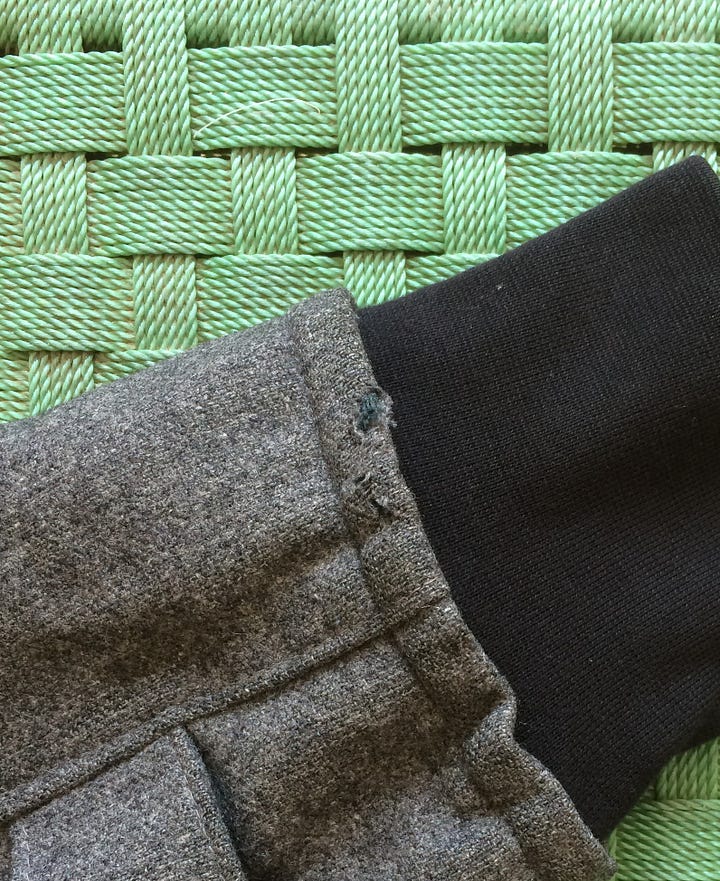
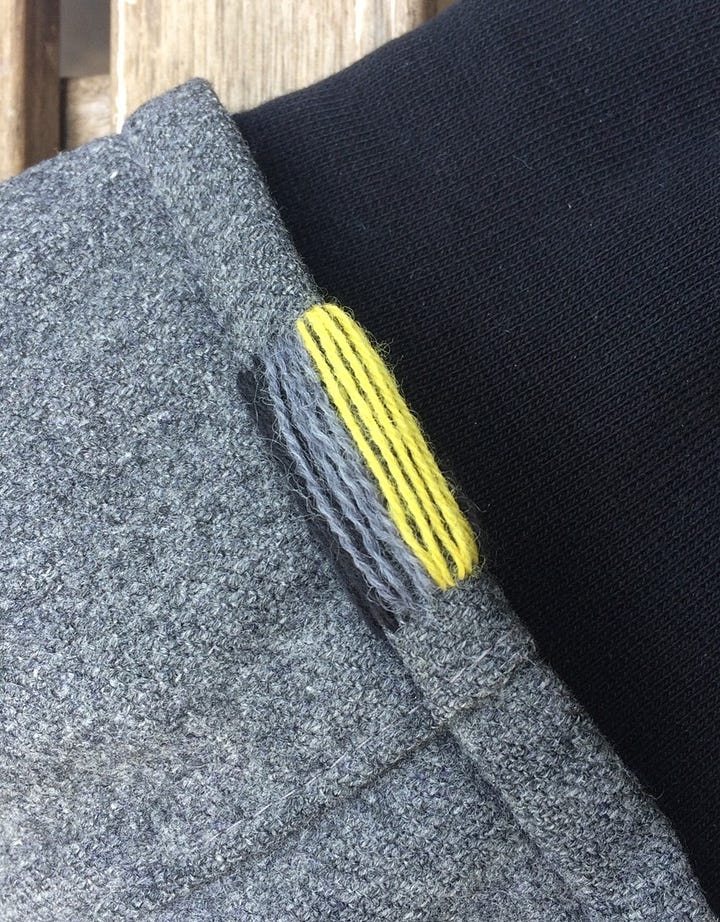
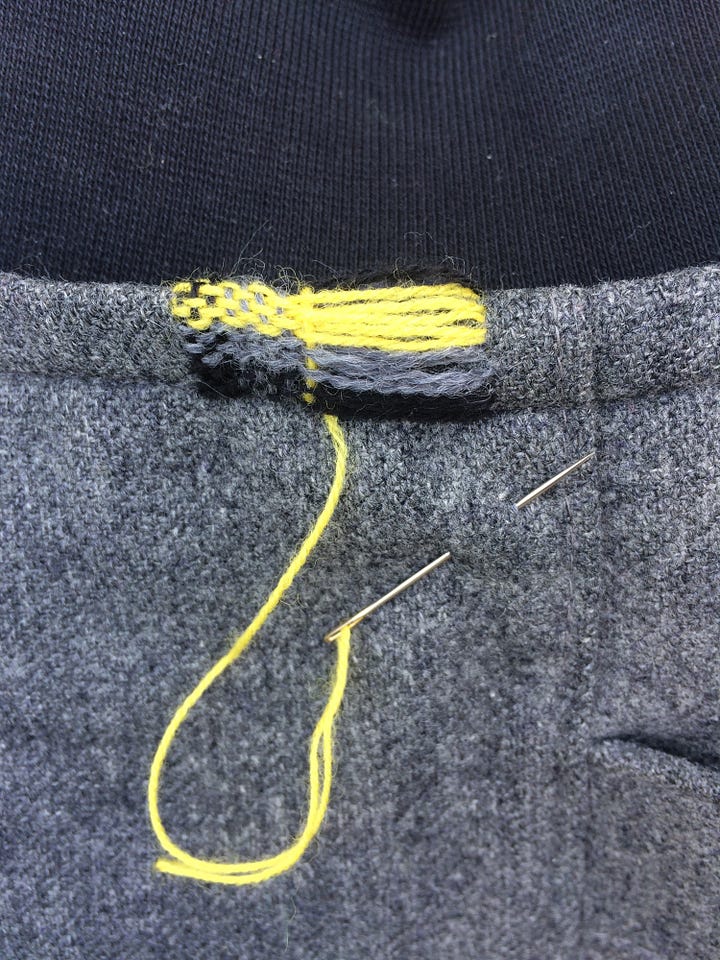
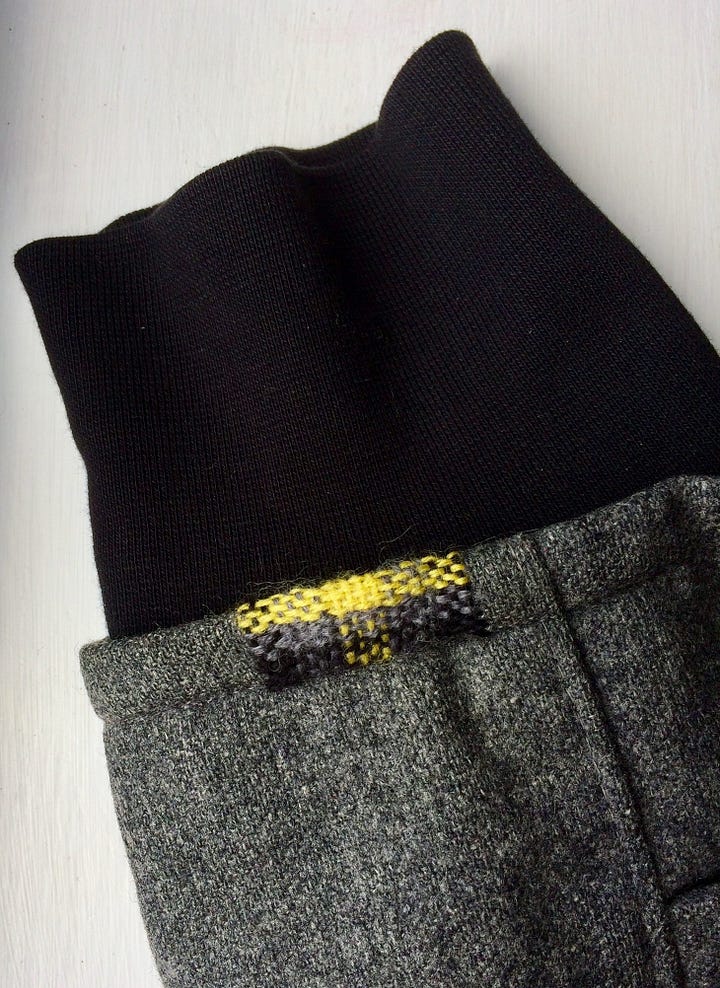
This coat has undergone quite a transformation since it was made around 40 years ago and its evolution is a good example of how we can customise garments to suit our life and style. Cliched as it may sound, if we start with a garment that’s really good quality and made-to-last we can rework it, restyle it and repair it over and over again.
My mending kit for this repair:
1. Darning mushroom for the circular repair. If you don’t have a darning mushroom, then try an orange, a soup ladle or even a cricket ball (tennis balls could be used but only if you’re not using a sharp needle otherwise it could catch in the fuzzy surface). If you’re repairing a larger area on woven fabric you might want to use an embroidery hoop.
2. Needles: I used slightly sharper needles for sewing the warp into the fabric but for the weaving you can use blunter needles, more like a traditional darner, so that the points don’t catch or separate the yarn.
3. Darning yarn: a mix of Scanfil yarn and vintage that I’d picked up in charity shops
Here’s what’s coming up this week:
My mending pile: I’ll be honest, I still haven’t mended the new hole in my gloves that I wrote about two weeks ago. I’m determined to do it asap, partly because I’m unconvinced the warm weather we’re experiencing today is likely to last. Plus, I don’t like to put knits away for the spring without repairing them. Best to do it now so they’ll be ready to wear in the Autumn.
What I’m reading: aside from darning, one of the most joyful things in my life currently is Lucy Mangan’s novel Are We Having Fun Yet? It’s a brilliantly observed, giggle-fueled, slice of family life.
Next week on The Mending Kit: how The Mending Kit got its name…
Thank you for reading The Mending Kit. If you’re enjoying it, please do share it, ‘like’ it, subscribe, or leave a comment below. It really means a lot to get feedback!





